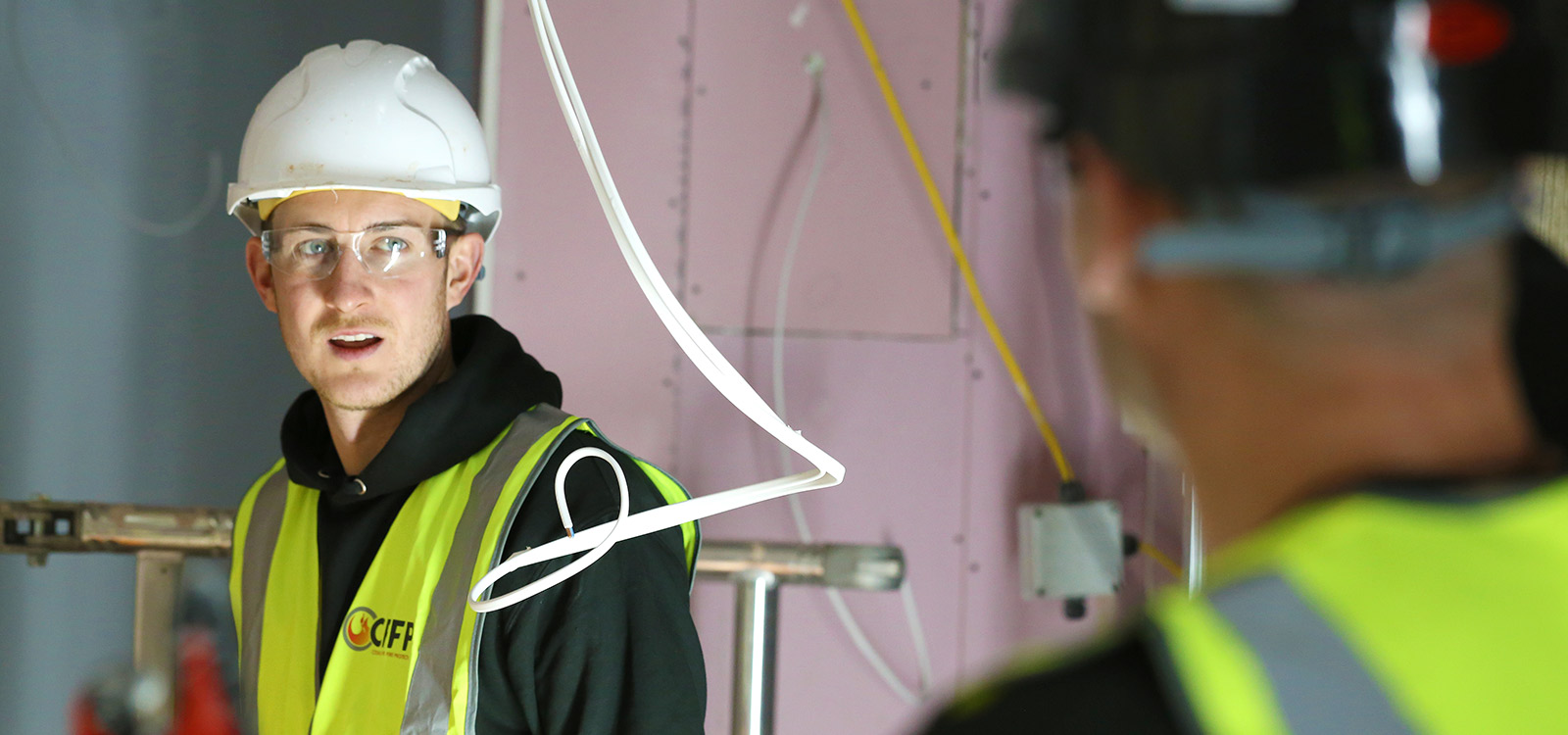Cavity Fire Barriers – A Beginner’s Guide to Cavity Fire Barriers
In this guide we provide an overview of cavity fire barriers and the benefits they can provide.
What is a Cavity Fire Barrier?
A cavity fire barrier is an element of passive fire protection utilised to segregate void spaces within walls, above ceilings or below suspended floors. Comprised of fire-stopping materials, like cement mortar or glass fibre, they are fitted within building cavities and are designed to prevent penetration of smoke or flame to restrict the movement of fire within a building.
Essentially, they block routes for smoke and flame to spread through concealed spaces or cavities.
Cavity Barrier Vs Fire Stop
Fire stops are also elements of passive fire protection. However, slightly different to cavity fire barriers, fire stops seal openings and joints in fire-resistance rated walls and floors to prevent fire from passing through various building compartments.
Why are Cavity Barriers Important?
A wide range of buildings are honeycombed with concealed cavities and voids within roofs, floors and walls. Concealed spaces in a building can present a significant danger, however, as they can act as a chimney; providing an easy route for flame, hot gases and smoke to move from one compartment of a building to another.
Cavity barriers ensure each compartment and concealed cavity of a building is sub-divided, preventing the rapid spread of fire from one compartment to another. Cavities that haven’t been effectively managed allow air to be drawn in and smoke to vent out, accelerating the spread of fire.
Cavity fire barriers are an essential element of fire protection in modern buildings – research has shown that fires can extend up to 10 times higher in buildings without cavity barriers (regardless of whether the surfaces of the cavity are combustible or not).
Fire Cavity Barrier Regulations
BS 9991 provides recommendations and guidance on the design, management and use of residential buildings to ensure adequate fire safety measures are in place. It covers dwellings (houses/flats), residential accommodation blocks and specialised housing, and applies to both the design of new buildings and to alterations on existing buildings.
The regulation requires that buildings have measures in place to control the spread of flames. Fire cavity barriers do just this – they help to divide and compartmentalise concealed cavities so that the fire is contained. This helps to keep the fire in a single compartment rather than spread rapidly. Fire cavity barriers even ensure that parts of the building that you can’t see are contributing towards effective fire protection.

How to Install a Cavity Fire Barrier
The important thing to remember when installing cavity fire barriers is that their purpose is to ensure each compartment is separated from another. They should be installed to close the edges of cavities (including around openings such as windows and door openings) and at junctions where an external wall cavity is in alignment with a compartment wall or compartment floor.
Unless you are trained and have experience in doing so yourself, it’s strongly advised that you get a professional fire protection company to install your cavity fire barriers. Failure to install it correctly can be fatal, so it’s crucial it is carried out to the highest standard.
Cavity Fire Barrier Installation Bristol and UK
Here at CPFP, we provide the highest levels or passive fire protection. Based in Bristol and servicing the UK nationally, we help to prevent the transfer of fire, smoke and heat through walls, floors and ceilings of buildings of all sizes.
Working with clients, main contractors and sub-contractors, we specialise in installing and maintaining cavity barrier fire protection. We’re a team of trusted fire professionals who install cavity barriers to hospitals, schools, residential buildings, industrial factories and many other types of buildings across the UK.
As approved providers of various fire protection products, we have access to a variety of suppliers, who have their own regularly updated test data, depending on the required fire rating and project requirement.
Get Started with CPFP
If you’re looking for professional cavity fire barrier installation and maintenance, or would like more information our fire protection services, please don’t hesitate to get in touch today. We’ll provide bespoke recommendations and a competitive quote based on your building’s specific requirements.
Speak to Us Today.
Address: The Old Angel, Flax Bourton, Bristol, BS48 3QQ
Phone: 0117 450 9943
Email: info@cpfp.co.uk
